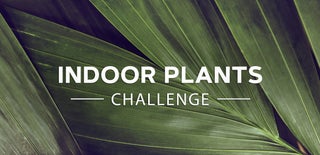Introduction: Self Watering Soda Cans With Electronic Water Meter
I'm very bad at caring for plants, and I've always wanted to have some edible plants in my house, so I made these self watering pots from recycled materials that anyone can get. I've seen similar pots using just a plastic bottle, but to be honest I tried it and something green (I think algae) grew inside because the transparency of the bottle allows light to enter, that problem is solved with the can.
Step 1: Self Watering Pot
Materials:
-Soda can
-Plant pot (it can be the top part of a plastic bottle, a used coffee capsule, an actual plant pot, etc.)
-Absorbent thread (I cut a strip of fabric from an old sock)
-Soil
Tools:
-Can opener
-Knife (I'm using the one in my swiss tool)
Step 2: Remove the Top of the Can
Use the can opener as usual, but with the soda can
Step 3: Make a Hole (if Necessary) and Insert the Thread
Use the knife to drill a hole in the bottom of the pot. Measure the approximate height from the bottom of the can to the pot hole and tie a knot large enough that it does not go through the hole.
Step 4: Assemble
Fill the pot with soil, the can with water, and put the pot in the can.
Step 5: Mechanical Water Meter
Materials:
-Small tube (An old pen or a plastic popsicle stick will do!)
-2 bottle caps
-Aluminum
-Wire (I used clips)
-Cable for protoboard
PD: Sorry for the color inconsistancy, it was a lot of trial and error
Step 6: Make the Meter
Cut one of the caps to have only the flat top. Drill holes in the center of both caps. Assemble the structure with the caps and the wire. Cover the flat cap with aluminum.
Step 7: Make the Sensor
Make the tube go through bot cap holes. Attach the cable to the tube to make the sensor, use 2 cables that will be conductively joined by the aluminum when going up or down.
Step 8: Some Considerations
Make sure the sensor rises with the water level, you might have to build a structure inside to prevent water from seeping in.
Make sure the conductivity is taking place, I struggled a lot with the lower cables and had to remove the variables with a wire triangle and fixing the position of the meter with the cables.
I am sure there are more ways to solve these problems, if you have one please share it :)
Step 9: Put the Sensor in the Can
Drill holes in the can. Place the sensor inside the can and pull the cables through the holes. Use more wire to fix the sensor.
Step 10: Electronic Circuit
Materials
-Mini protoboard
-Cable for protoboard
-TTL's as needed
-Green LED
-Red LED
-Resistors
-5V battery (I used an old powerbank)
Step 11: Design the Circuit
I want the red LED to light up when the water level is low, the green LED to light up when the water level is high and to retain its state when the water level is in the middle.
I made a truth table and used boolean algebra to use only NOR gates, so the only TTL I need is a 7402.
Step 12: Build a Basic Circuit to Test Conductivity
Optional but highly recommended. I am leaving the diagram in the images. Use the breadboard, resistors, and LEDs to make a circuit that illuminates only when the meter contacts the sensors. You can even leave it like that and use a third LED to make sure the circuit didn't run out of battery.
Step 13: Build the Sequential Circuit
Once again I am leaving the diagram in the images. It is the most practical way I found, but it is not the only one, if you feel more comfortable using another gate configuration, go ahead!

Participated in the
Indoor Plants Challenge











